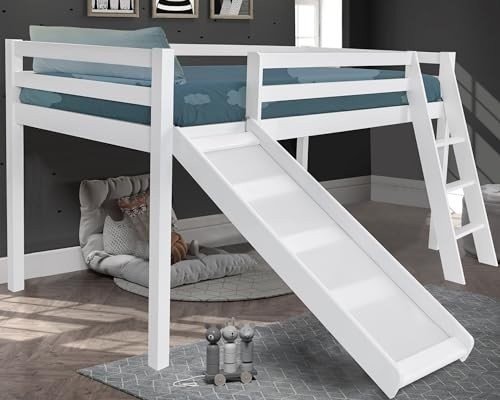10 Tips For Quickly Getting Best Kids' Bunk Beds

Title: Discovering the Best Kids' Bunk Beds: A Comprehensive Guide
Intro
As children grow, they require more space to accommodate their play and sleep requirements. Bunk beds are an exceptional option for parents wanting to maximize their children's bedroom space while providing an enjoyable and comfortable sleep environment. This short article will explore numerous elements of the best kids' bunk beds, concentrating on safety, style, materials, and additional features.
Safety Considerations
- Sturdiness: Look for bunk beds with sturdy frames and robust ladder systems. The bed must not wobble or tilt when in usage.
- Space: Ensure there is adequate area around the bunk bed for safe gain access to and maneuverability. As a rule of thumb, allow at least two feet of space between the bed and the walls.
- Guardrails: Select bunk beds with full-length guardrails on both sides to prevent unintentional falls throughout sleep.
- Bed mattress height: Ensure the bunk bed's leading mattress is low enough to prevent head injuries if a child rolls off the bed.
Design and Functionality
- Adaptability: Some bunk beds provide versatile designs, such as convertible bunk beds that can be separated into two individual beds, providing flexibility as children grow.
- Ladders: Consider bunk beds with built-in, angled ladders as they are safer and more comfortable for children to climb.
- Staircases: For more youthful children, bunk beds with integrated staircases use added security and benefit.
- Trundle beds: Trundle bunk beds offer an additional sleeping area for periodic visitors or pajama parties.
Products and Construction
- Wood: Wooden bunk beds use a classic and durable choice, with different surfaces and designs available. Choose for strong wood or premium engineered wood, such as MDF or plywood.
- Metal: Metal bunk beds tend to be more lightweight and economical. Guarantee the metal frames are sturdy and coated to avoid rust.
- Assembly: Choose bunk beds with clear instructions and pre-drilled holes for simple assembly. If bunk bed price , have actually the bed assembled by an expert for included peace of mind.
Additional Features
- Under-bed storage: Built-in drawers or shelves underneath the bottom bunk supply extra storage for toys, books, and other products, keeping the bed room arranged.
- Camping tents or canopies: Some bunk beds come with optional tents or canopies, creating a fun and cozy sleep environment for children.
- Lighting: Consider bunk beds with built-in reading lights for included convenience throughout nighttime stories and late-night reading.
FAQs
- What is the ideal age for a child to sleep on a bunk bed?A lot of makers recommend bunk beds for children aged six and above due to security concerns.
- Can bunk beds be used for 2 grownups?Though not ideal, some bunk beds are appropriate for two adults, supplied they are tough and meet safety guidelines.
- Are bunk beds challenging to assemble?Some bunk beds may provide assembly challenges. Ensure you have enough tools and help before starting.
- What bed mattress thickness is appropriate for bunk beds?A lot of bunk beds accommodate bed mattress as much as eight inches thick. Always describe the maker's guidelines.
Conclusion
Buying the best kids' bunk beds provides a practical and stylish sleep solution for children, promoting safety, convenience, and organization. By carefully considering aspects such as security, style, products, and additional features, parents can develop an enjoyable and practical sleep environment for their youngsters.
Please note: Always guarantee bunk beds satisfy existing safety guidelines and guidelines, and assemble and utilize them responsibly to prevent accidents and injuries.

